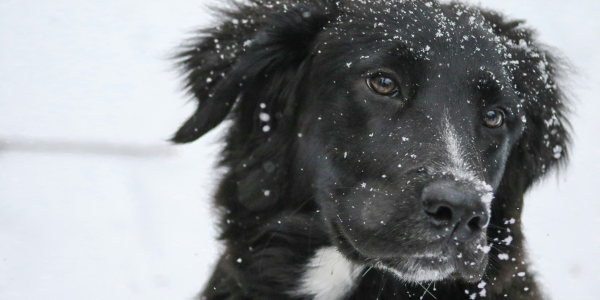As winter sets in, it’s crucial to be mindful of the potential challenges that cold weather poses to our furry companions. Cold winter conditions can lead to discomfort for pets, causing chapped paws and irritated, flaky skin. The ASPCA emphasizes the potential hazards of chemicals from ice-melting agents, urging pet owners to take protective measures. Continue reading for tips on pet safety tips for winter. Also, if you are looking for a horse property for sale in Colorado, contact Colorado Horse Property today and speak with one of our horse-person realtors.
Winter Pet Safety Tips & Advice
The onset of cold winter conditions brings with it potential challenges for our beloved pets, particularly concerning their paw health. Exposure to chilly temperatures can result in uncomfortable conditions such as chapped paws and irritated, flaky skin. The ASPCA notes another concern: the potential danger of chemicals in ice-melting agents if licked off bare paws. To protect your pet, take proactive measures. Apply petroleum jelly or other paw protectants to their pads before going outdoors, creating a protective barrier against harsh elements. Alternatively, equipping your pet with booties offers an additional layer of safety, preventing direct contact with icy surfaces.
Furthermore, maintaining paw hygiene is crucial for your pet’s well-being. After outdoor activities, it is advisable to clean their paws upon returning indoors. This not only helps remove any potential residue from ice-melting agents but also ensures a comfortable and irritation-free environment for your furry companion. By being proactive in protecting your pet’s paws during winter, you contribute to their overall health and happiness in the face of seasonal challenges.
Being the expert on your dog, you understand their tolerance for cold weather. Observe their behavior in chilly conditions, and if they seem uncomfortable, head back indoors. Adjust by opting for shorter walks and engaging in indoor play. Be vigilant for signs of frostbite, such as skin discoloration. Ensure your pet has a warm indoor sleeping spot, free from drafts and cold floors—consider a comfy dog bed, and provide an extra blanket or pillow if necessary. Remember that cars can act like refrigerators, trapping cold air and risking harm to animals. Avoid leaving your dog alone in a car during excessively cold temperatures, as per the ASPCA’s advice.

